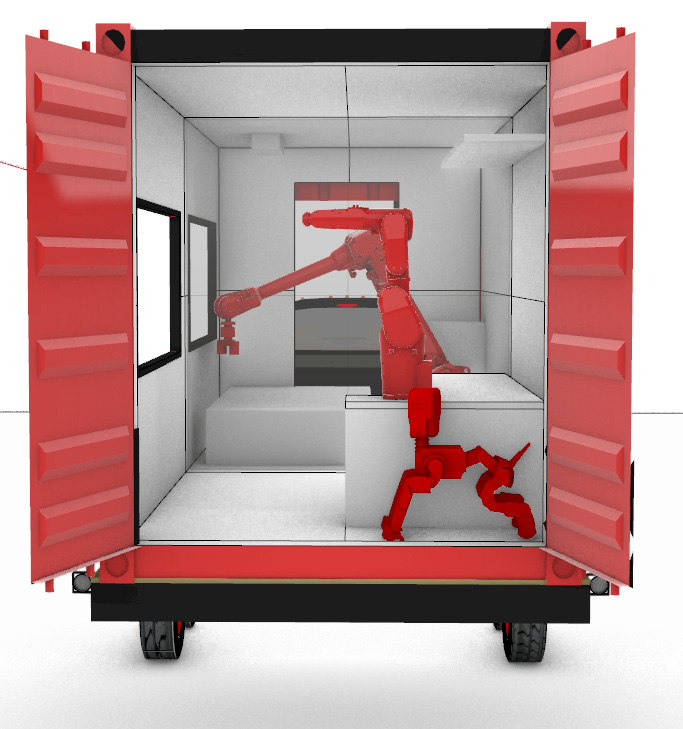
Factory-In-A-Box (FIAB)
Deploy our cutting-edge mobile microfactories to your construction site.
Our technology utilize computational design, robotic fabrication, additive manufacturing, and machine learning to provide precision, efficiency, and extensive design and fabrication capabilities typically exclusive to large-scale factories and enterprises. Bringing construction digitalization to SMEs.
The rental model and subscription tiers we offer eliminate the requirements of a significant upfront investment, enabling access to digital fabrication machines for SMEs in the construction industry, contributing to the sector's digitization and empowering the construction trades.



— Modularity —
Quick Deployment
Employing a cell-based production approach as opposed to traditional industrialized construction assembly lines.
Opting for production processes that can be reconfigured, utilizing multi-use, flexible, and affordable machinery, as opposed to relying on specialized equipment.
— Efficiency —
Flexible Robotic Processes
The FIAB is flexible and designed to enable multiple configurations and hence multiple tasks, more inline with SMEs in opposition to traditional robotic pipelines that are based on single, repetitive tasks.
The aim is to delegate simple tasks to the robots in the box and allow trades to focus on the interesting, skilled areas of the job.
— Integration —
Multiple Fabrication Processes on Collaborating Robot Arms
Installing a FIAB onsite throughout the construction process allows robotics and other digital technologies such as scanning, photogrammetry and data collection to be utilized. These technologies are fundamental for retrofitting the existing building stock.
— Mobility —
From Moving Materials to Moving Machines
A FIAB provides accessible construction in remote shelters through innovative materials and machines. These FIABs enable the potential of helicoptering in a remote factory to 3D print the components of such structures.
Sending machines as opposed to finished materials reduces helicopter time and use. Additionally, 3D printing enables the utilization of recycled plastics like PET and facilitates the integration of mechanical systems and furniture.
